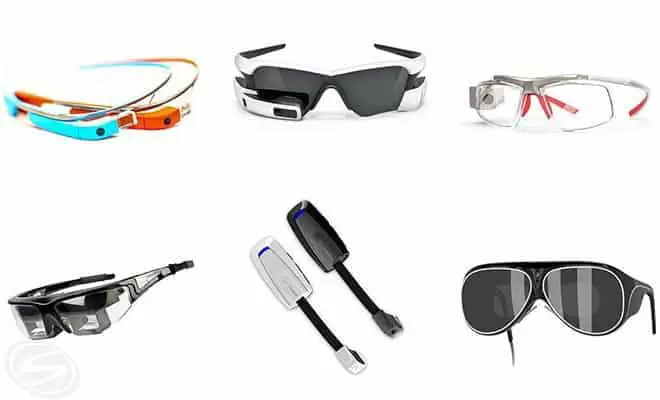We are constantly seeking out and evaluating all smart glasses, from their origins as vaporware through production and release, attempting to determine which will be the best smart glasses available for public consumption. At this time, the market is still in its infancy and the only true smart glasses to have been officially released (albeit only in beta) is Google Glass. Accordingly, a Top 5 Smart Glasses list for 2017 is, thus far, an exercise in futility. However, as we are constantly asked which smart glasses are the best, we have put together a list of our favorites, not based upon day-to-day use as a consumer, but upon our use and experimentation with prototypes at various consumer electronics shows, the feature sets intended to be offered by manufacturers, and our interviews and fact finding missions with industry leaders currently working the bugs out of their alpha models. The smart glasses niche is advancing quickly and we expect the release of several great products in 2014. In the mean time, if you love being an early adopter and are chomping at the bit to adorn your face with some of this awesome new tech, here are our five favorite smart glasses as they exist today:
1. Google Glass *Best Smart Glasses of 2017*
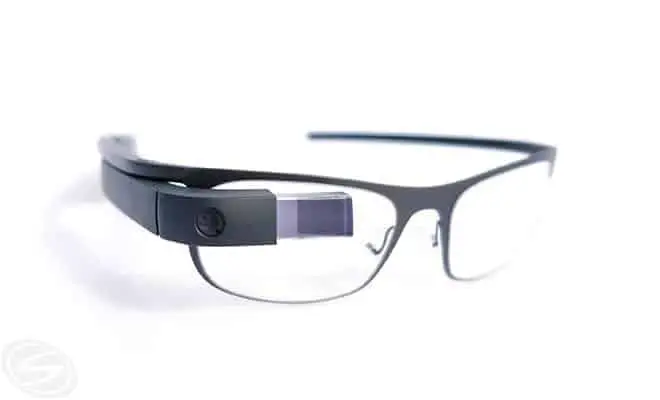
#1 Best Smart Glasses – Google Glass
Google Glass is leading the charge to create a market for smart glasses, a relatively new wearable technology niche. Much like the Pebble Smartwatch when it was first released, Google Glass had no competition and were the first true smart glasses available on the open market (although, still technically in beta). Being first to market firmly entrenched Pebble as the leader among smartwatch manufacturers, and Google Glass is likewise becoming the standard by which emerging smart glasses technology is being judged … and rightly so.
Google recently released its Google Glass Explorer Edition V2. Although still in beta and, technically, a prototype, Glass is your only available means by which to become an early-adopter of this exciting new technology. Popular features include email and text message alerts and replies, photo and video capture, viewing and posting social status updates, navigation using Google maps, foreign language translation, and, of course, Google and wikipedia lookups. Control of Google Glass is accomplished using relatively simple voice commands, gesture control with a tilt of your head, or swipes and taps on the Glass frame. Given the revolutionary nature of Google Glass, and the fact that it is still in beta, it is a surprisingly polished and comprehensive example of modern wearable technology.
At $1,500, is Google Glass presently a good value for the general public? Absolutely not … and prices will drop significantly. However, if you are a developer, or even an early adopter who routinely spends big money to be the first on your block with the latest gadgets, then getting ahold of a Glass headset is an absolute must. This is the future of wearable technology and Google Glass is an excellent first generation smart glasses offering. And, in spite of its developmental status, Google Glass is simply fun and already possesses a broad feature set worthy of daily use. So, we say … “Ok Glass, lead the way!”
• Compare prices on Amazon
2. Vuzix M100 Smart Glasses
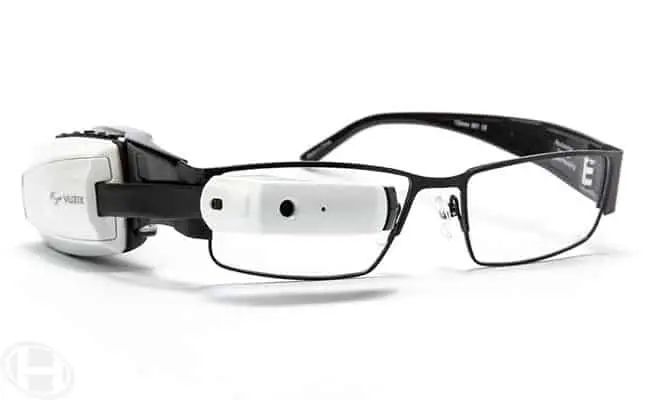
#2 Best Smart Glasses – Vuzix M100
The Vuzix M100 claims to be the “first commercially available smart glasses” but no units have been shipped and only limited functionality was displayed at CES 2014. In reality, the M100 is poised to be the first legitimate competitor to Google Glass and, as such, is destined to be judged using Glass as the standard. While its specs are superior to Glass, the Vuzix offering does not have the entrenched Glass developer base to do some of the heavy lifting on the feature development front. However, Vuzix has been a developer of augmented reality products for many years and has significantly more experience with this exciting new technology.
The Vuzix M100 smart glasses sport a single 428 x 240 color LCD display that is viewed directly, unlike the Glass which is viewed as a reflection on an angled transparent screen. When in use, the M100 has the appearance of being a 4″ horizontal display at approximately 12″ away, more than large enough to easily read streamed text and data. Intended as a stand-alone Android-based device, the M100 packs a 1GHz OMAP4430 processor, 1GB of RAM, 4GB of storage and includes a forward facing 5 MP camera capable of capturing 1080p video … that is a lot of wearable tech packed into a tiny space. 8 hours of battery life is claimed when in stand-by mode, but only 2 hours when displaying data and recording images. This limited activity time will likely be an issue for users so a 3800mAh portable power pack is included to provide an additional 14 hours of actual use time. Control of the M100 is accomplished using voice recognition, a gesture sensing light on the side of the device, or via the Android app that can also receive real-time video direct from the smart glasses over Wi-Fi.
Although a fun device for the early adopter, the Vuzix M100 feels more like a beta than the current version of Google Glass. This is not because it is lacking in technical specifications, but because it lacks a useful feature set that will likely not emerge until Vuzix gets its product in the hands of creative programmers who will code to their own needs. That is the path Google has chosen and likely the path upon which the Vuzix M100 smart glasses will find success. In the mean time, at $999, the M100 is currently the least expensive means by which to sample this emerging new technology and your only alternative to Google Glass.
3. Meta Pro Smart Glasses
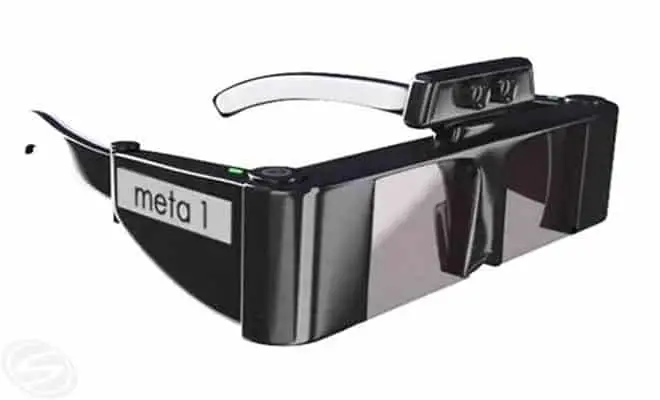
#3 Best Smart Glasses – Meta Pro
4. GlassUp AR Smart Glasses
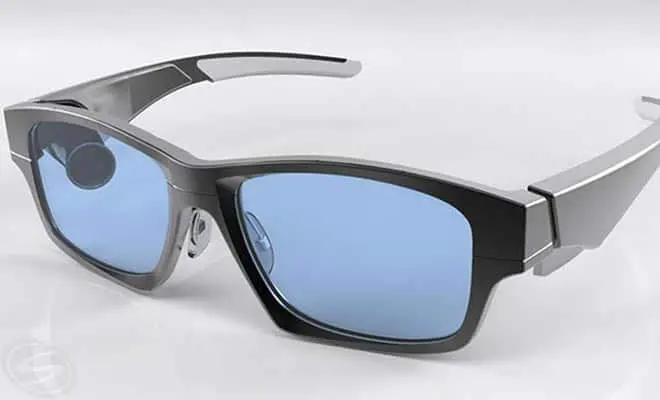
#4 Best Smart Glasses – GlassUp AR Augmented Reality
5. EmoPulse NanoGlass Smart Glasses
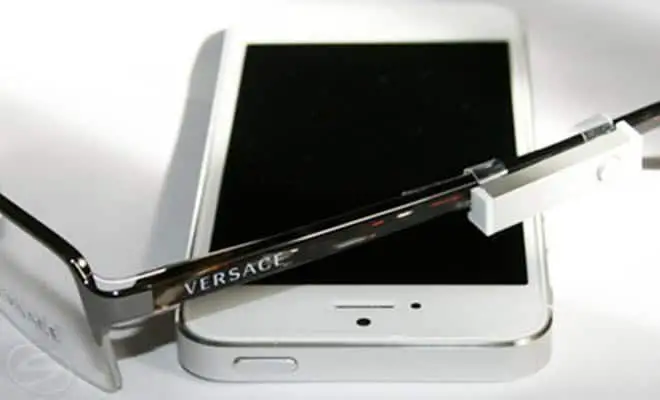
#5 Best Smart Glasses – EmoPulse NanoGlass-4
The EmoPulse NanoGlass, unfortunately, appears to have evaporated into the ether. Although obviously not in the same category as Google Glass, we really liked the NanoGlass for what it was: an inexpensive and unobtrusive extension of the user’s smartphone. The NanoGlass was designed to do one thing … provide visual alerts to various types of messages received by the wearer’s phone. Although minimalist in its feature set, at only $25, the EmoPulse NanoGlass offered an inexpensive introduction into the world of smart glasses for people not wanting to drop $1,500 on a more sophisticated system.
More Smart Glasses
Would you like to see what else is available and what is currently in development? Mash the link and check out our ever-expanding list of smart glasses.
